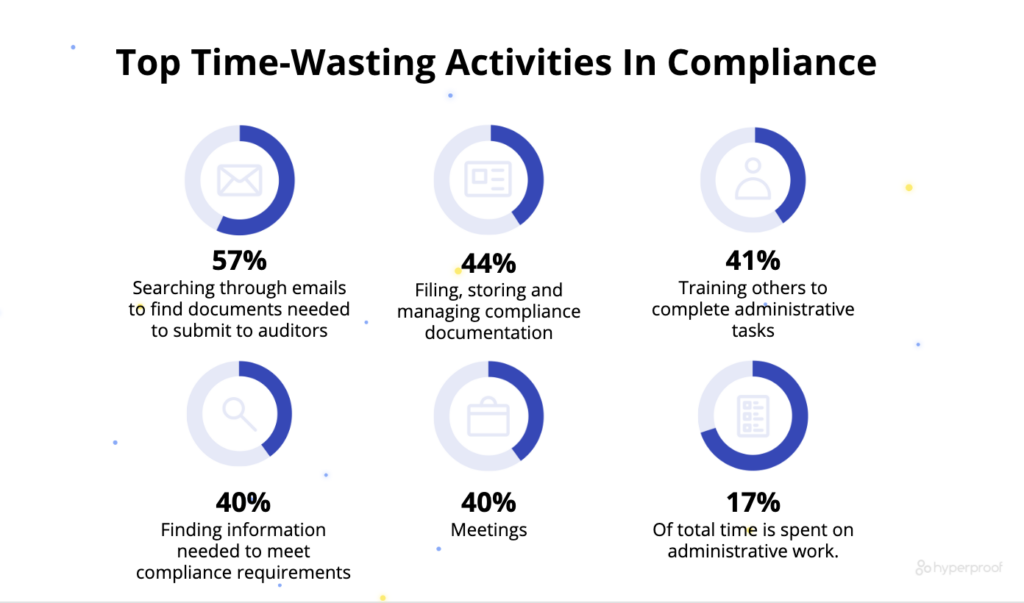How Compliance Software Automates 5 Manual Tasks for Security Professionals

From collecting evidence to remediating issues, security compliance professionals are responsible for a variety of manual and time-consuming tasks. These tedious workflows often slow productivity and lead to frustration and inefficiency. As the importance and demand of their jobs continue to grow, it’s essential to find ways to improve the day-to-day functions of security teams. Many of these laborious tasks can be simplified and made more efficient with compliance software, and they can eliminate many of the pain points related to compliance work.
What is compliance software?
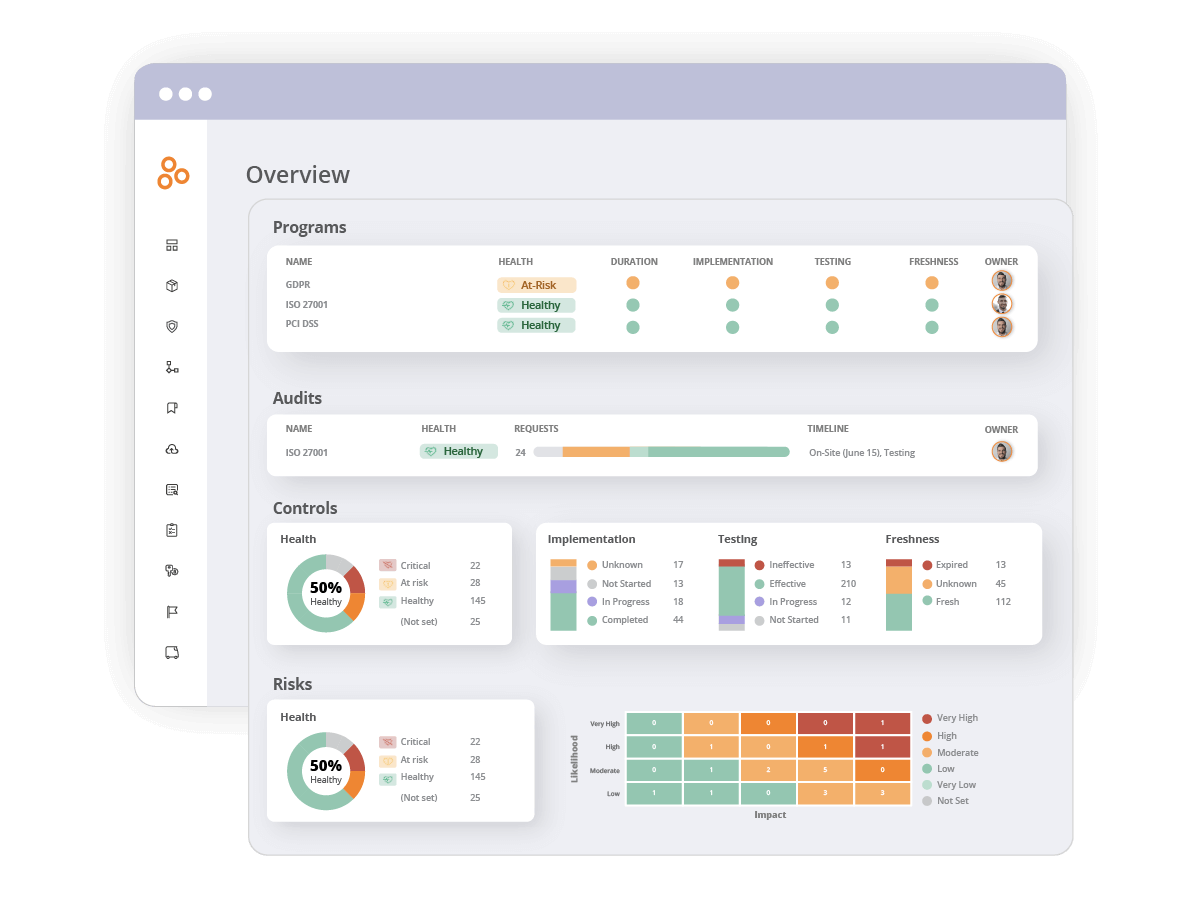
Compliance software helps centralize, automate, and streamline tasks and functions relevant to maintaining compliance. This includes risk management and remediation, evidence collection, and reporting on current posture. It helps security professionals streamline workflows, simplify tedious tasks, and communicate risk to all relevant stakeholders. By offering greater transparency about compliance requirements, compliance management software allows you to help protect your organization from costly compliance mistakes.
5 manual tasks compliance software automates
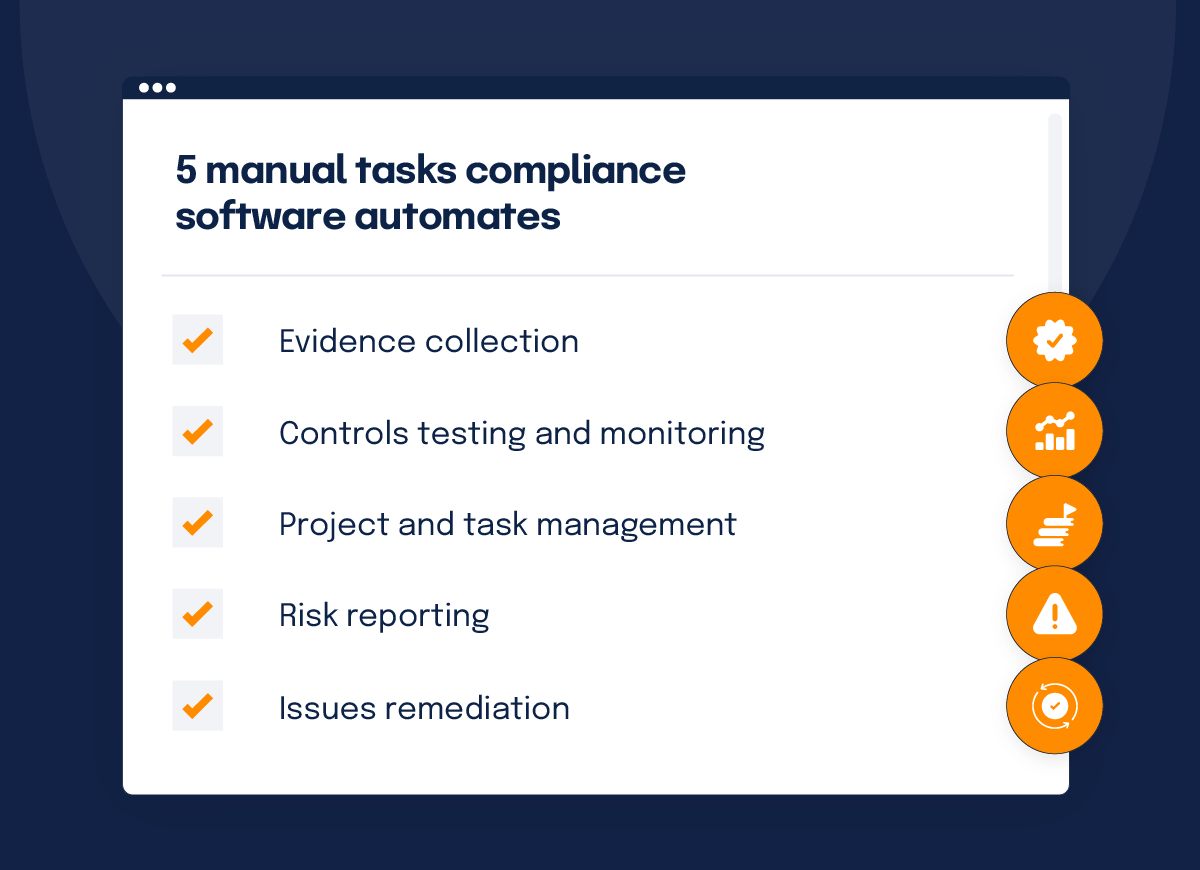
1. Evidence collection
Many compliance professionals are likely to use spreadsheets when it comes to evidence collection. While managing one framework in a spreadsheet might be manageable, you’ll find yourself frustrated as you try to add more as your company grows. It’s complex, finicky work trying to get policies and procedures documented in a way that assesses controls. Plus, spreadsheets aren’t the best way to track and manage evidence — especially if you’re reusing any across multiple controls.
PDFs and photos don’t play nicely with spreadsheets, and forget about automatically notifying stakeholders. Your best bet is via email, chat, or messenger pigeon (okay, we admit this is dramatic, but you get our point). Add in the time it takes for your colleagues to locate and submit evidence and the hours of overhead work you’re looking at hours of overhead work to test your controls.
With compliance software, you can streamline evidence collection by integrating your software directly with the tools you use each day. From identity management tools to Google Docs and more, an ideal compliance management software will have direct integrations that pull information for you. So you’re only managing the system, not doing all the manual work.
Most compliance software also includes real-time notifications and messaging with your stakeholders to make collaborating with others to retrieve evidence easier. Automatically notify your colleagues that you still need evidence from them so you’re no longer chasing them down for proof. You can also use compliance software to build collaborative evidence collection and management workflows across your organization, including auto-assigning tasks, the ability to nudge stakeholders to refresh evidence, and receiving automatic notifications when your evidence is outdated.
2. Controls testing and monitoring

Manually testing your controls is a long, arduous process. And even when it’s done, you still have to account for human error. Add that not every company prioritizes all of their controls and you’re looking at potential risks instead.
With the right compliance software, testing controls can be made easy. The ideal solution should have continuous controls monitoring (CCM). CCM is the use of technology to allow continuous or high-frequency controls monitoring so you can validate the effectiveness of controls and help mitigate risks.
But CCM isn’t always the best option as some CISOs argue that it automates too much and can lead to an increase in errors. Others argue that it’s unnecessarily expensive. Contrary to popular belief, cost savings are actually possible with CCM. By improving the efficiency of your controls testing, you can save on manual labor and staffing costs. Plus, you can also identify trends, improve overall effectiveness, and even reduce remediation costs. It can also help reduce how much time audit and assurance staff spend on testing your controls annually.
Using CCM brings down your inherent risk so you no longer need to test all controls manually and can spend time evaluating your most critical controls and risks, rather than worrying about managing all of them one at a time. CCM simplifies a tedious process, making it easier for compliance professionals to automate their workflows. It takes away manual labor that bogs down teams in regards to annual reviews and audits, streamlining control testing for your organization.
CCM is a helpful tool for organizations looking to scale, too. As you add new frameworks, the volume of controls also increases, and it becomes harder for teams to manage.
The ideal compliance management software will have quick insight into which controls are at risk and which are in need of critical attention based on freshness and other variables. With the right software, you can understand where your controls stand in real-time.
Want to know how to set up CCM? Here are 5 steps to get you started.
3. Project and task management
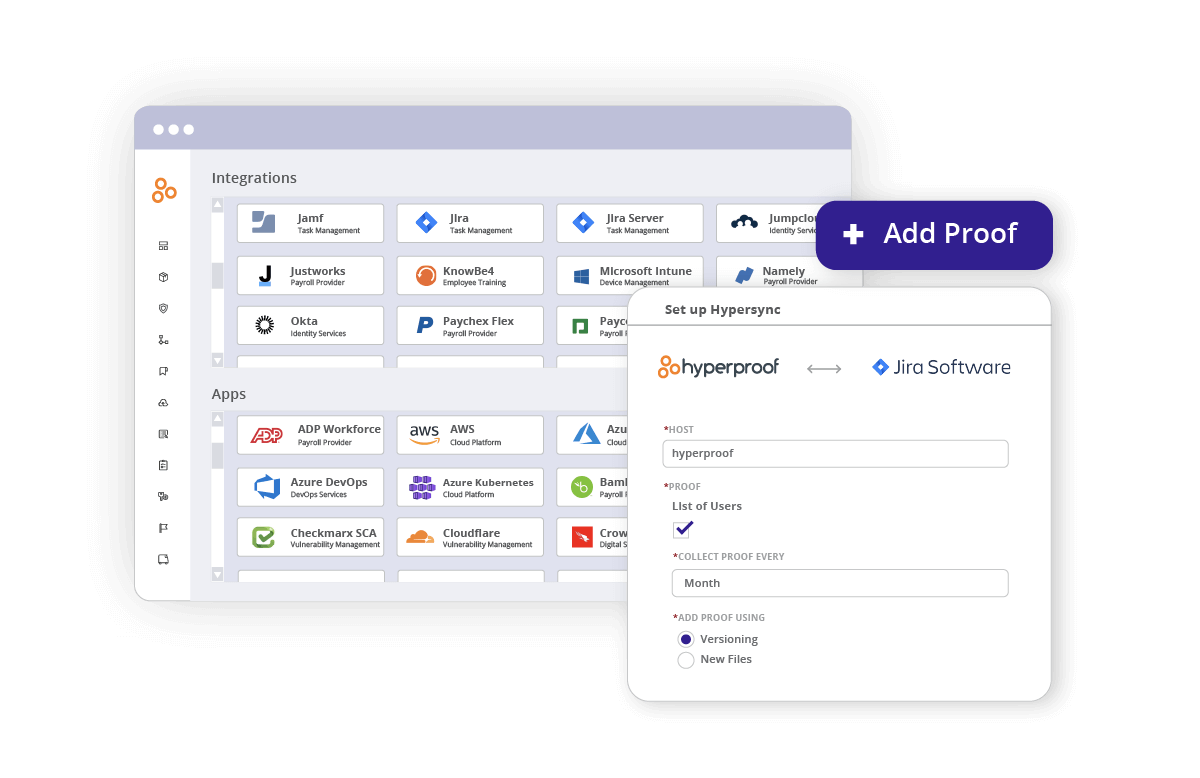
Project management is a large part of the governance, risk, and compliance (GRC) discipline. Managing risk projects is challenging because risks touch many parts of your overall business. For these reasons, tracking and managing risk-associated tasks is vital to running a compliance program. You might find yourself using spreadsheets or legacy systems to track user actions and collect evidence, but these project management tools are clunky and often hard to navigate.
Compliance software comes into play with rich collaboration tools. Gone are the days of tracking tasks via spreadsheets; instead, in the ideal compliance management software, you can track and manage tasks and assign them out to stakeholders and auditors.
Collaboration tools truly benefit management-level employees reporting to the CISO because they provide high-level insights into what your team is working on that you can quickly communicate to stakeholders. Having collaboration tools is important, as it allows for delegation of work and assignment/tracking of delegated work — but it’s not of great importance to your CISOs and other executives. The benefits of these tools are more localized to your direct security teams.
Compliance software helps open better lines of communication between team members and stakeholders, meaning they can remediate risks more efficiently, test controls quickly, and manage issues and projects, all within one place. With the right compliance management software, you’ll find it easier to communicate with your team and your C-level stakeholders about what you’re working on so everyone stays in the loop about your security posture.
4. Risk reporting
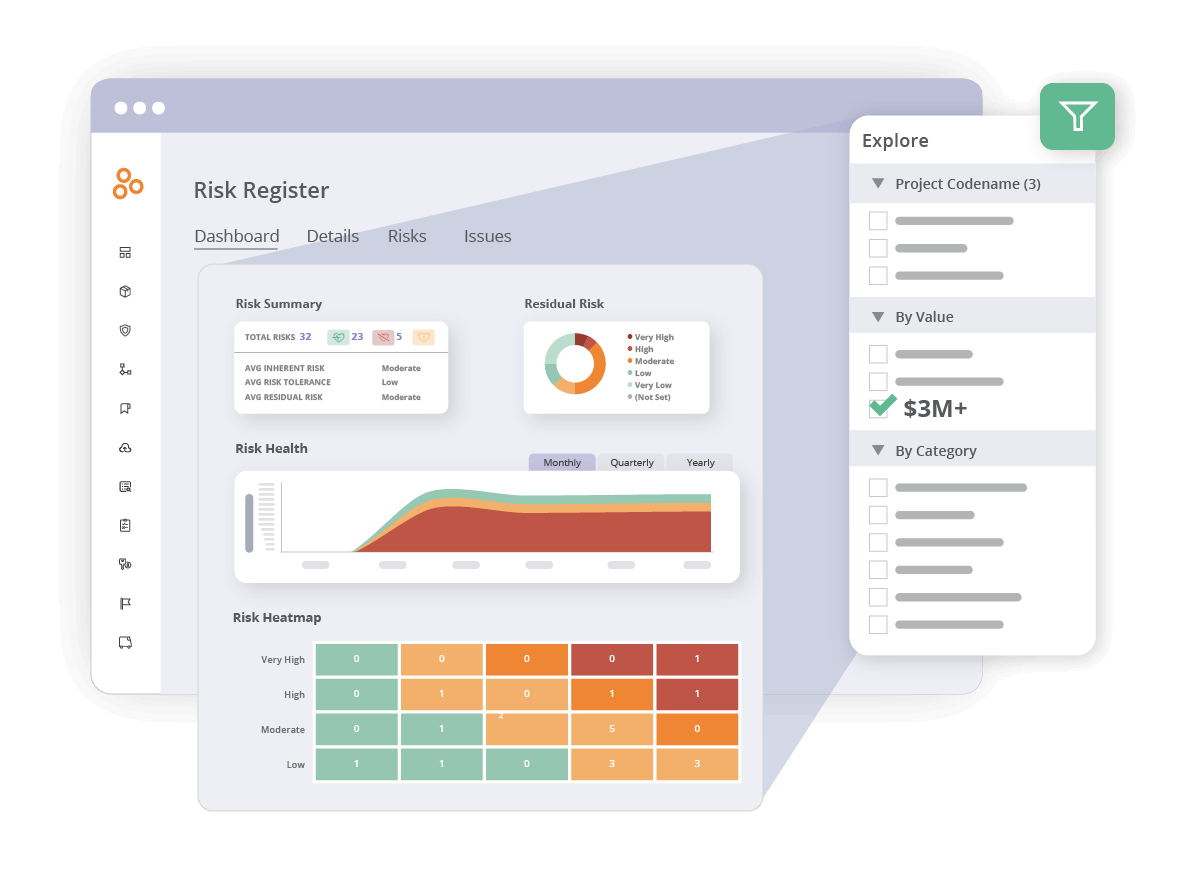
Instead of struggling to build a dashboard out of disparate systems and spreadsheets, pull it all together into one place. From risk reporting to control health, know where you stand at all times with a single pane of glass into your risk posture. Make reporting to the board easier than ever with custom reports and dashboards so they can find out everything they need to know all at a glance. Know your posture without dealing with complex formulas in Excel, and you’ll save hours of time.
Compliance software simplifies risk reporting, so you can take back your day and prioritize security issues that matter most — and make a difference in your security posture. For example, Artemis Health uses compliance management software as a control command center. This allowed the team to streamline workflows and promote a unified approach to compliance management across the organization.
The results? A 50% reduction in time spent on manual processes, freeing up the team’s time to focus on more strategic areas.
Hyperproof is a next-level risk and compliance operations platform. It has saved us so much time.
– Kathleen McNaughton, Security and Compliance Engineer, Artemis Health
Read Artemis Health’s full story
5. Issues remediation
Issues in your compliance operations are important things to track. From potential audit findings to controls that need to be properly tested, you have to identify what should be tracked and stay on top of the issues in your spreadsheets. But it’s not the simplest way to do it.
Tracking issues in spreadsheets is the norm, but what if you could track them as they relate to your controls and risks? With the ideal compliance software, you can create issues and link them to related controls, risks, audits, and more — and assign them to stakeholders for remediation. Set up how you want the system to track issues and automatically identify problem areas within your compliance program that need attention.
An example of this is linking an issue to both a control and multiple risks. If you have an open issue, you can set your control to show up as at risk. Have an open issue past due? Your control can automatically be set to critical so your team knows they need to work on remediation — and that it’s a top priority for them. By assigning specific users to issues, your team members know who’s responsible for remediation, too.
Need data in a certain format in order to report to certain authorities and governing bodies? No problem. You can export your POA&M (plan of action and milestones) in specific formats, so you can report to them more easily than ever before. No more digging through spreadsheets to find your plan of action — your compliance management software can handle that for you.
Essential compliance software features
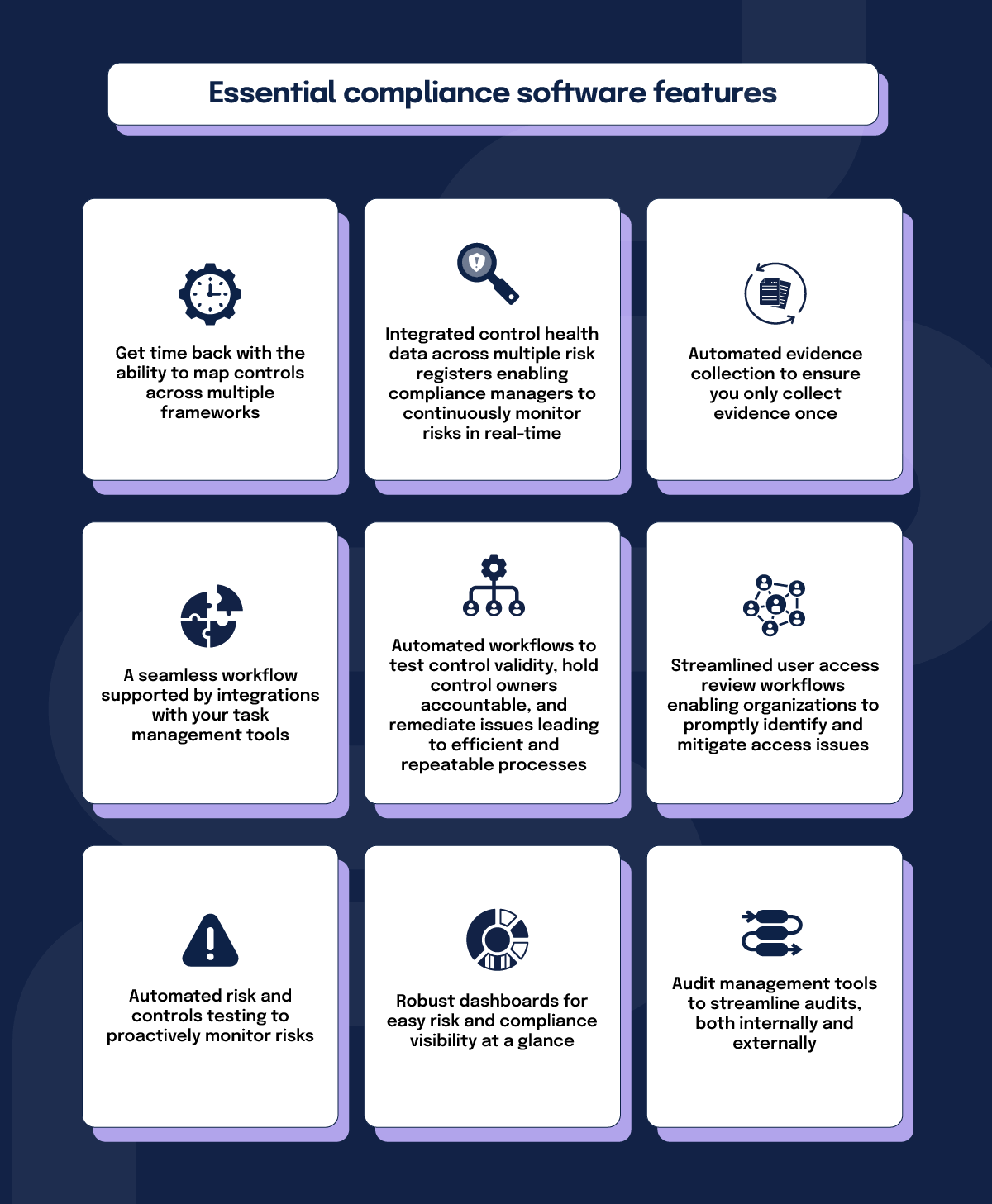
Each compliance software has its own features and offerings, but the best platforms on the market should offer the following:
- The ability to map controls across multiple frameworks, giving you time back
- Integrated control health data across multiple risk registers enabling compliance managers to continuously monitor risks in real-time
- Automated evidence collection to ensure you only collect evidence once
- A seamless workflow supported by integrations with your task management tools
- Automated workflows to test control validity, hold control owners accountable, and remediate issues leading to efficient and repeatable processes
- Streamlined user access review workflows enabling organizations to promptly identify and mitigate access issues
- Automated risk and controls testing to proactively monitor risks
- Robust dashboards for easy risk and compliance visibility at a glance
- Audit management tools to streamline audits, both internally and externally
Without these features, your team might end up investing in an underdeveloped solution that doesn’t actually solve your compliance operations challenges.
See how Hyperproof can streamline your compliance workflows

5 key benefits of compliance software
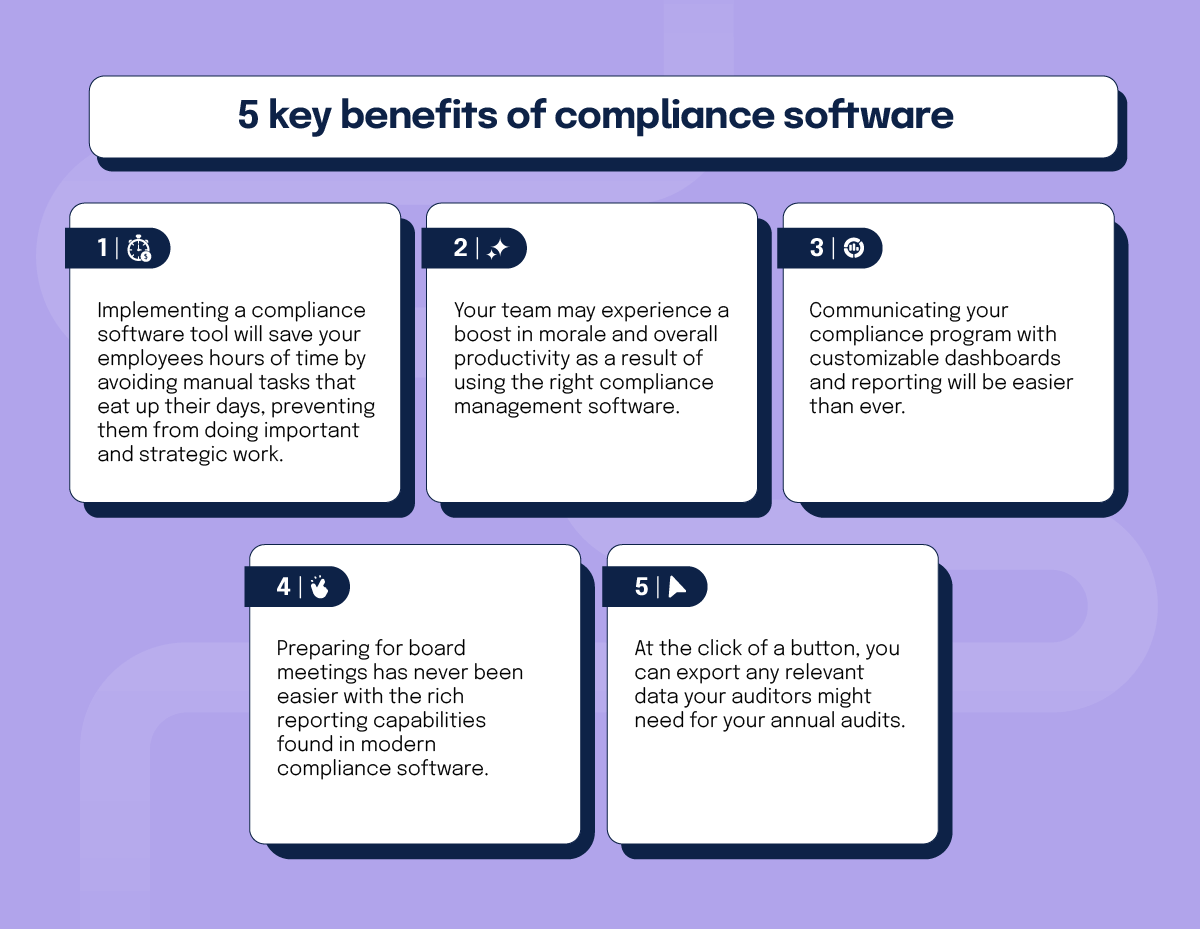
Time savings, workflow automation, and streamlined processes are just a few of the benefits of compliance software. At the highest level, here are some more:
- Implementing a compliance software tool will save your employees hours of time by avoiding manual tasks that eat up their days, preventing them from doing important and strategic work.
- Your team may experience a boost in morale and overall productivity as a result of using the right compliance management software.
- Communicating your compliance program with customizable dashboards and reporting will be easier than ever.
- Preparing for board meetings has never been easier with the rich reporting capabilities found in modern compliance software.
- At the click of a button, you can export any relevant data your auditors might need for your annual audits.
The right compliance software alleviates stress

Compliance software should help enable you to be more successful in your job. It shouldn’t distract you from what matters, and it should make your job a lot easier — while alleviating the stress of managing your risk and compliance program.
From automating tasks and evidence collection to empowering better collaboration with your various stakeholders, the right compliance management software will unlock a new, easier reality for you and your colleagues. It will also help you break free from being a spreadsheet janitor so you can focus on your actual job: compliance operations.
The benefits of implementing the right compliance management software are clear. Automating tasks, streamlining evidence collection, and enabling better collaboration with stakeholders, opens the door to a new, easier reality for you and your colleagues. Say goodbye to the days of being a spreadsheet janitor and embrace the opportunity to focus on your actual job: compliance operations.
Take the first step towards making compliance management easier by requesting a demo. See firsthand how our compliance software can optimize your workflows and bring efficiency to your organization.
See Hyperproof in Action
Related Resources
Ready to see
Hyperproof in action?







